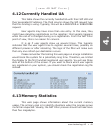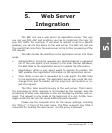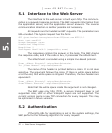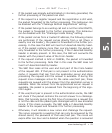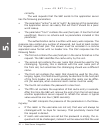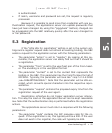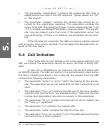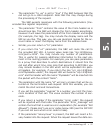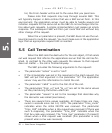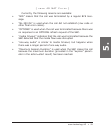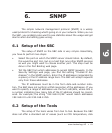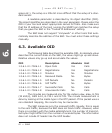
snom technology AG • 57
[ S N O M 4 S N A T F I L T E R ]
• The parameter “to_ua” is set to “true” if the SBC believes that the
call will go to a client endpoint. Note that this may change during
the processing of the request.
The SBC expects responses with the following parameters (line-
encoded like register responses):
• The parameter “from” contains the value of the From-header as is
should look like. The SBC will change the From-header accordingly,
however it will leave the parameters of the From-header unchanged
(for example, the tag). You may include the display name and the
URI as you like. This way, you can use canonical names for the ac
-
count name or insert the display name from the address book.
• Similar, you can return a “to” parameter.
• If you return the “uri” parameter, the SBC will route the call to
the provided SIP URI. A typical value looks like “sip:123@proxy.
com;parm=1234”. You may include any number of parameters.
This is useful for passing additional information to the next ele
-
ment in the routing process. For example, you can pass parameters
to a proxy that describes to which destinations it should fork the
call and after which time. Also note that according to RFC3261 you
may include headers in the URI which will be expanded into pack-
et headers. For example, if you return the line “uri: sip:123@test.
com?MyHeader=Hello”, the request URI will become “sip:123@test.
com” and the header with the name “MyHeader” will be inserted into
the packet with the content “Hello”.
• The parameter with the name “id” will carry a token that will be re
-
turned on the termination web request. With this variable, you can
match the start and end transactions.
• If you set the parameter “expires” to a number, you limit the maxi
-
mum duration of that call. The value contains the number of sec-
onds.
• If you return a number if the parameter “error_code”, the request
will be rejected with that code. The parameter “error_message” will
contain the text that is used as error explanation (for example “Not
Allowed”). Please don’t use error codes below 300 (see the SIP RFC
if you are not sure which error code to take).
• If the parameter “anonymous” is present, the SBC will insert a Pri
-
vacy header into the request. When the request leaves the data cen-
5.



